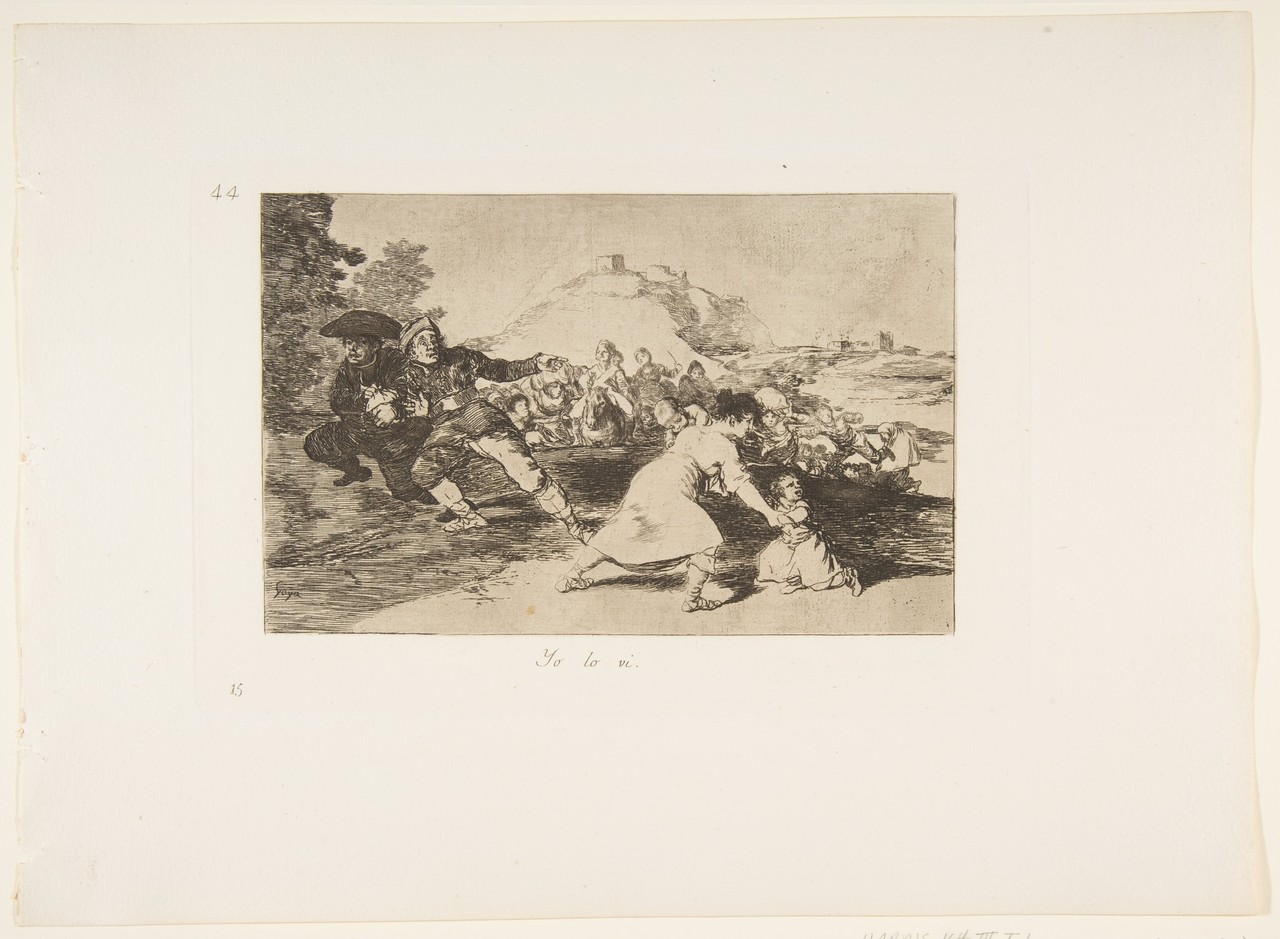Francisco Goya, “Yo lo vi” – “I Saw It” (1810)
Abstract
The First Consul of France, Napoleon Bonaparte, who had made himself a quasi-dictator, imposed the Treaty of San Ildefonso on Spain in October 1800. Wars between France and Spain, Portugal and Great Britain followed. Migration into the military had been an important form of labor migration since the Middle Ages, and forced enlistments uprooted hundreds of thousands. Armies—whether nationally designated British, French, Spanish or German—were always composed of men of many cultures. Since the end of 1808, troops from Baden, Nassau and Hesse had to fight on Napoleon's side; a few months later, his army drafted about 7000 Westphalians, 4000 from the Grand Duchy of Berg and 2000 Würzburgers. Many never returned. In the following years, Napoleon expanded his wars of conquest into Germany, Austria, and Italy—destruction, brutality, and forced recruitment followed here as well. The Battle of the Nations near Leipzig ended this second all-European War (the Thirty Years War having been the first).
In the historiography of that time, however, only soldiers were counted, but not refugees, the dead, uprooted survivors or the mutilated. From 1810 to 1820, the Spanish painter Francisco Goya (1746–1828) created a series of etchings entitled “Los desastros de la guerra” (“The Disasters of War”), in which he relentlessly depicted the violence and atrocities, some of which he had experienced himself. Goya's cycle of paintings, from which the etching shown here is taken (No. 44), depicts the brutal excesses of the soldiers, especially against the civilian population. In the foreground, two men and a woman with a child can be seen fleeing from the soldiers in the background of the picture. The fear of the known brutality of the soldiers, which drives the fugitives, is written on their faces.
Source

Source: Francisco Goya, “Yo lo vi” – “I Saw It,” plate no. 44 from “Los desastros de la guerra” (“The Disasters of War”), 1810, etching published 1863. Available online at: https://www.metmuseum.org/art/collection/search/381372
Metropolitan Museum of Art, Gift of Mrs. Grafton H. Pyne, 1951